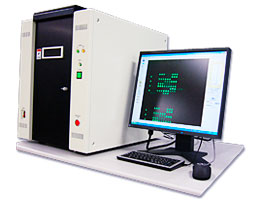|
| Healthy Donor Red Blood Cells Have Unique Glycan Fingerprints (click for authors’ abstract):
Background/Case Studies: Lectins are glycan recognizing proteins, some of which can distinguish between ABO blood types. Lectin arrays provide an extensive set of glycan probes for rapid analysis of biological samples. Red blood cells contain a variety of surface glycans that, in combination, act a as unique signature. Our aim was to create a healthy donor red blood cell database of glycan fingerprints by ABO blood type and data mine unique glycan signatures attributed to the donors.
Interplay between protein glycosylation pathways in Alzheimer’s disease (click for authors’ abstract):
Deviations from the normal nucleoplasmic protein O-GlcNAcylation, as well as from normal protein sialylation and N-glycosylation in the secretory pathway, have been reported in Alzheimer’s disease (AD). However, the interplay between the cytoplasmic protein O-GlcNAcylation and the secretory N-/O-glycosylation in AD has not been described. We present a comprehensive analyisi of the N-, O-, and O-GlcNAc-glycomes in AD-affected brain regions as well as in AD patient serum. We detected marked differences in levels of glycan involved in both protein O-GlcNAcylation and N-/O-glycosylation between patients and healthly individuals and revealed brain region-specific glycosylation-relation pathology in patients. These alterations are not general for other neurodegenerative conditions, such as frontotemporal dementia and corticbasal degeneration. The alteraions in the AD glycome in the serum could potentially lead to novel glyco-based biomarkers for AD progression. Strikingly, negative interrelationship was found between the pathways of protein O-GlcNAcylation and N-/O-glycosylation, suggesting a novel intracellular cross-talk.
Talk to us about your samples for GlycoProfiling! Ask about onsite GlycoLite demo! |
![]() |
|
All living cells assemble a diverse repertoire of glycan structures on their surface via their glycosylation machinery.
With recent advances in glycobiology, cell-surface glycosylation and lectin-glycan signaling have been shown to play critical roles in immune response and cell-to-cell and cell-pathogen interactions.
Glycan structure alterations have been identified as biomarkers for cancer and have been utilized to design carbohydrate-based therapeutic vaccines.
Several tools are being developed for glycan profiling based on chromatography and mass spectrometry, however, these technologies require a large amount of the samples, which is often not possible from clinical specimens.
Click here to link to publication featuring the utlity of lectin microarray in monitoring terminal galactosylation and sialylation of glycoproteins: |
|
| New Probing Solution dry format now shipping:
Used for both the preparation of your samples and washing our LecChips(TM) for your glycan profiling
Maximize Signal-to-Noise ratios of your glycan profiling
Recommended for highly reproducible lectin microarray analysis |
![]() |
Lectin microarrays provide a versatile platform for high-throughput, rapid, and sensitive analysis of carbohydrate structures on a variety of clinical and biological samples.
The lectin microarray has become a pioneering technology in glycobiology research, leading to several discoveries on the glycan-mediated recognition responsible for signal transduction of a broad range of cellular processes central to immune regulation and human diseases.
Lectin microarrays have been used for the following:
- discovery of new cell-surface and cell-free biomarkers for cancer and other diseases
- design of carbohydrate-based therapeutic vaccines
- characterization of stem and differentiated cells in the regenerative medicine field,
- profiling viral glycan shields
- characterizing therapeutic proteins and monoclonal antibodies
|
|
GlycoTechnica GlycoStation
GlycoStation Reader 1200, developed by GlycoTechnica, rapidly profiles glycoproteins using its Lectin chips and its novel evanescent-field excitation scanner. Because the GlycoStation does not require washing, it detects protein carbohydrate interactions with very high sensitivity, even in crude samples.
High Versatility & Applicability
No Wash Process: High reproducibility
Real time liquid phase analysis
Quantitave analysis detecting weak interactions for both N- and O-glycans
Identification of Isomers
No need for cleaving glycans from the carrier protein
High Sensitivity (LOD) 100 pg /mL Glycoprotein / 100pM Glycan / 500 – 1,000 Cells
Applicable for crude samples, cells, and whole blood
Suitable for time course studies

